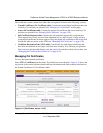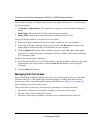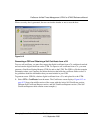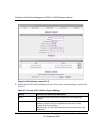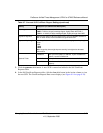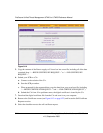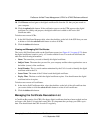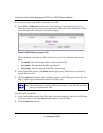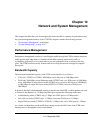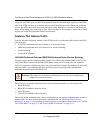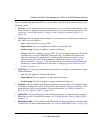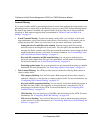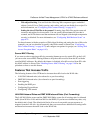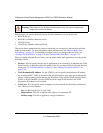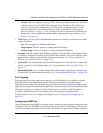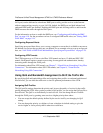
10-1
v1.0, September 2009
Chapter 10
Network and System Management
This chapter describes the tools for managing the network traffic to optimize its performance and
the system management features of the UTM. This chapter contains the following sections:
• “Performance Management” on this page.
• “System Management” on page 10-9.
Performance Management
Performance management consists of controlling the traffic through the UTM so that the necessary
traffic gets through when there is a bottleneck and either reducing unnecessary traffic or
rescheduling some traffic to low-peak times to prevent bottlenecks from occurring in the first
place. The UTM has the necessary features and tools to help the network manager accomplish
these goals.
Bandwidth Capacity
The maximum bandwidth capacity of the UTM in each direction is as follows:
• LAN side ( UTM25 or UTM10): 2000 Mbps (two LAN ports at 1000 Mbps each)
• WAN side: 2000 Mbps in load balancing mode (UTM25 only: two WAN ports at 1000 Mbps
each), 1000 Mbps in auto-rollover mode (UTM25 only: one active WAN port at 1000 Mbps),
or 1000 Mbps in single WAN port mode (UTM25 or UTM10: one active WAN port at
1000 Mbps)
In practice, the WAN side bandwidth capacity is much lower when DSL or cable modems are used
to connect to the Internet. At 1.5 Mbps, the WAN ports support the following traffic rates:
• Load balancing mode (UTM25 only): 3 Mbps (two WAN ports at 1.5 Mbps each)
• Auto-rollover mode (UTM25 only): 1.5 Mbps (one active WAN port at 1.5 Mbps)
• Single WAN port mode (UTM25 or UTM10): 1.5 Mbps (one active WAN port at 1.5 Mbps)
As a result, and depending on the traffic that is being carried, the WAN side of the UTM is the
limiting factor to throughput for most installations.



